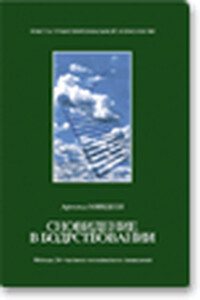Детекция лжи и обмана - страница 136
O'Sullivan, M., Ekman, P. & Friesen, W. V. (1988). The effect of comparisons on detecting deceit. Journal of Nonverbal Behavior, 12, 203–216.
O'Toole, D., Yuille, J. C, Patrick, C.J. & lacono, W G. (1994). Alcohol and the physiological detection of deception: arousal and memory influences. Psychophysiology, 31, 253–263.
Parham, I. A., Feldman, R. S., Oster, G. D. & Popoola, O. (1981). Intergenerational differences in nonverbal disclosure of deception. Journal of Social Psychology, 113,261–269.
Parker, J. F. (1995). Age differences in source monitoring of performed and imagined actions on immediate and delayed tests. Journal of Experimental Child Psychology, 60,84-101.
Patrick, C.J. & lacono, W. G. (1991). Validity of the control question polygraph test: the problem of sampling bias. Journal of Applied Psychology, 16, 229–238.
Peters, D. P. (1991). The influence of stress and arousal on the child witness. In J. Doris (Ed.), The suggestibility of children's recollections. Washington, DC: American Psychological Association, 60–16.
Podlesney, J. A. (1995). A lack of operable case facts restricts applicability of the Guilty Knowledge Deception Detection Method in FBI criminal investigations FBI Technical Report, Quantico, VA.
Poole, D. A. & White, L. T. (1991). Effects of question repetition and retention interval on the eyewitness testimony of children and adults. Developmental Psychology, 21,915–986.
Porter, S. & Yuille.J. C. (1996). The language of deceit: an investigation of the verbal clues to deception in the interrogation context. Law and Human Behavior, 20, 443–459.
Pynoos, R. S. & Eth, S. (1984). The child as witness to homicide.Journal of Social Issues,40, 81-108.
Pynoos, R. S. & Nader, K. (1988). Children who witness the sexual assault of their mothers. Journal of the American Academy of Child and Adolescent Psychiatry, 21,561–512.
Raskin, D. С. (1919). Orienting and defensive reflexes in the detection of deception. In H. D. Kimmel, E. H. Van Olst & J. F. Orlebeke (Eds), The orienting reflex in humans. Hillsdale, NJ: Erlbaum, 581–605.
Raskin, D. С. (1982). The scientific basis of polygraph techniques and their uses in the judicial process. In A. Trankell (Ed.), Reconstructing the past. Stockholm: Norsted & Soners, 311–311.
Raskin, D. C. (1986). The polygraph in 1986: scientific, professional, and legal issues surrounding acceptance of polygraph evidence. Utah Law Review, 29, 29–14.
Raskin, D. С (1988). Does science support polygraph testing? In A. Gale (Ed.), The polygraph test: lies, truth and science. London: Sage, 96-110.
Raskin, D. C. (1989). Polygraph techniques for the detection of deception. In D. C. Raskin(Ed.), Psychologicalmethods in criminalinvestigation and evidence. New York: Springer-Verlag, 241–296.
Raskin, D. С & Esplin, P. W. (1991a). Assessment of children's statements of sexual abuse. In J. Doris (Ed.), The suggestibility of children's recollections. Washington, DC: American Psychological Association, 153–165.
Raskin, D. С & Esplin, P. W (1991b). Statement Validity Assessment: interview procedures and content analysis of children's statements of sexual abuse. Behavioral Assessment, 13, 265–291.
Raskin, D. C. & Hare, R. D. (1918). Psychopathy and detection of deception in a prison population. Psychophysiology, 15, 126–136.
Raskin, D. C, Kircher, J. C, Horowitz, S. W. & Honts, С R. (1989). Recent laboratory and field research on polygraph techniques. In J. С Yuille (Ed.), Credibility assessment. Dordrecht: Kluwer Academic Publishers, 1-24.
Raye, С L. & Johnson, M. K. (1980). Reality monitoring vs. discrimination between external sources. Bulletin of the Psychonomic Society, 15, 405–408.
Reid, J. E. (1941). A revised questioning technique in lie detection tests. Journal of Criminal Law, Criminology, and Police Science, 31, 542–541.
Reid, J. E. & Inbau, F. E. (1911). Truth and deception: the polygraph (lie detector) technique. Baltimore, MD: Williams & Wilkins.
Reis, H. Т., Senchak, M. & Solomon, B. (1985). Sex differences in the intimacy of social interaction: further examination of potential explanations.

